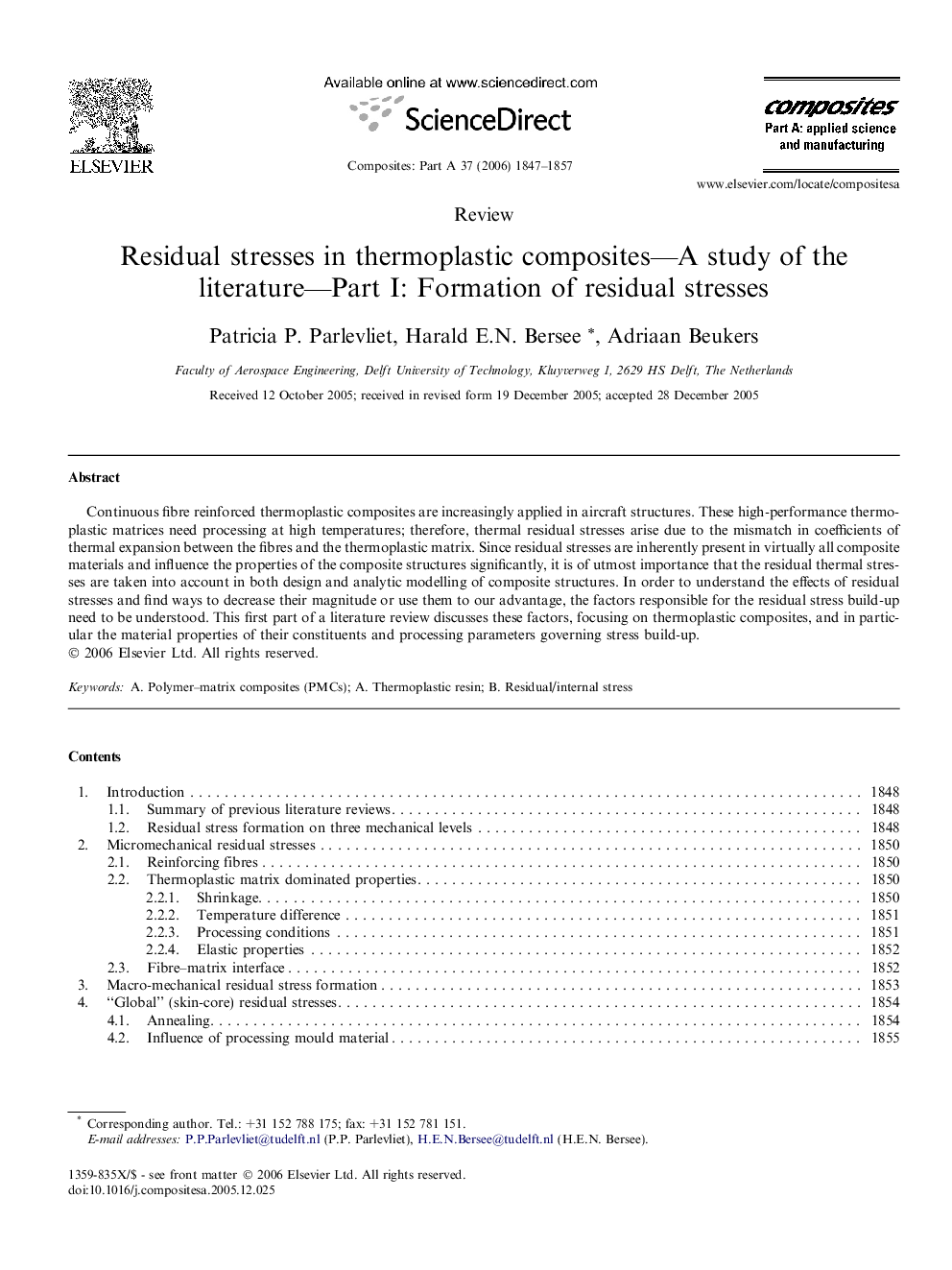| Article ID | Journal | Published Year | Pages | File Type |
|---|---|---|---|---|
| 1467816 | Composites Part A: Applied Science and Manufacturing | 2006 | 11 Pages |
Continuous fibre reinforced thermoplastic composites are increasingly applied in aircraft structures. These high-performance thermoplastic matrices need processing at high temperatures; therefore, thermal residual stresses arise due to the mismatch in coefficients of thermal expansion between the fibres and the thermoplastic matrix. Since residual stresses are inherently present in virtually all composite materials and influence the properties of the composite structures significantly, it is of utmost importance that the residual thermal stresses are taken into account in both design and analytic modelling of composite structures. In order to understand the effects of residual stresses and find ways to decrease their magnitude or use them to our advantage, the factors responsible for the residual stress build-up need to be understood. This first part of a literature review discusses these factors, focusing on thermoplastic composites, and in particular the material properties of their constituents and processing parameters governing stress build-up.
